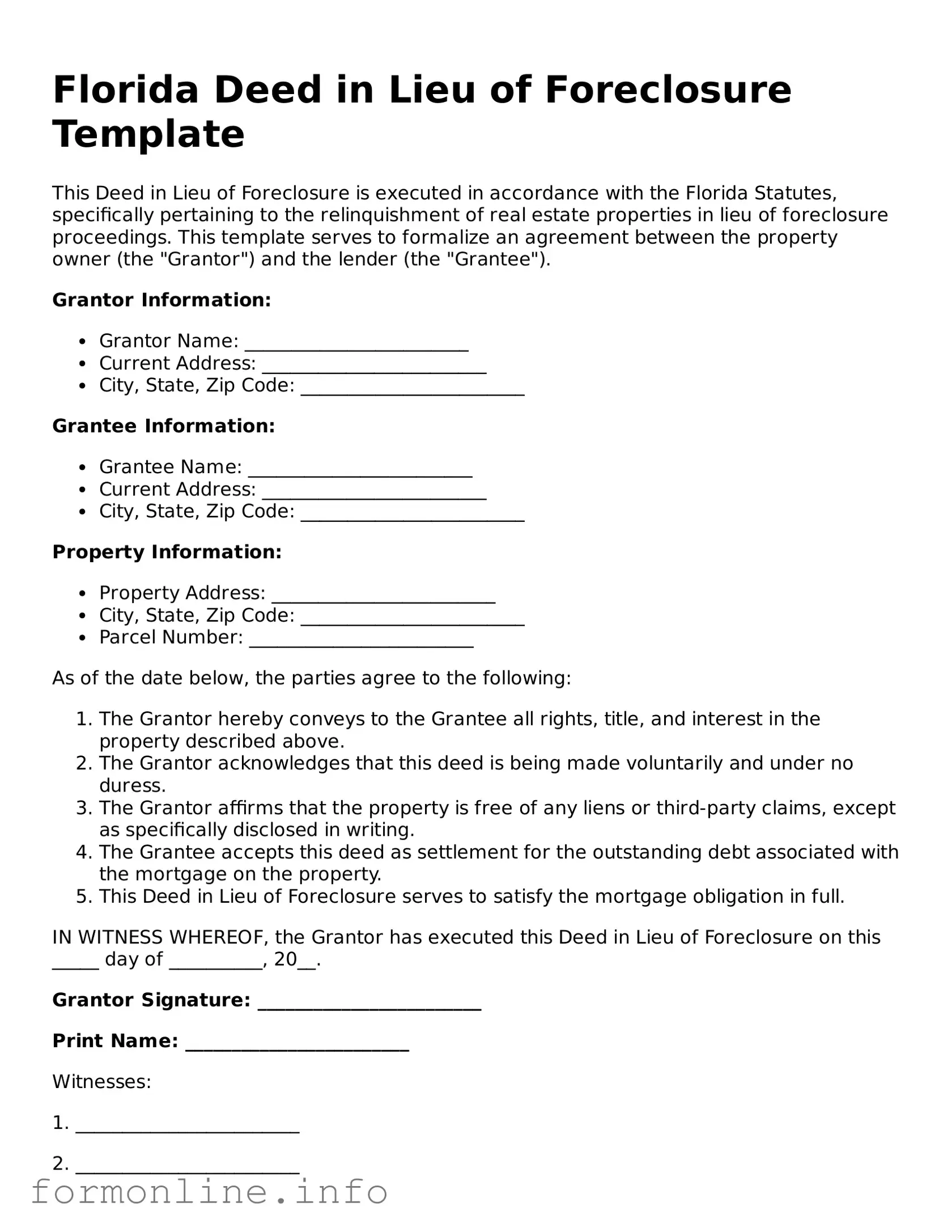A Mortgage Release, also known as a Satisfaction of Mortgage, is a document that signifies the borrower has paid off their mortgage loan in full. Similar to a Deed in Lieu of Foreclosure, it serves to clear the title of the property. Once recorded, it officially releases the lender's claim on the property, allowing the homeowner to transfer ownership without the burden of the mortgage. Both documents aim to simplify the process of transferring property ownership and alleviating debt, but a Mortgage Release occurs after full payment rather than as a solution to default.
A Short Sale Agreement involves the sale of a property for less than the total amount owed on the mortgage. Like a Deed in Lieu of Foreclosure, it provides a way for homeowners to avoid foreclosure. In both cases, the lender must agree to the terms, as they will incur a loss. However, a Short Sale requires the property to be sold on the open market, while a Deed in Lieu allows for a direct transfer back to the lender, often streamlining the process for the borrower.
The process of transferring ownership of a mobile home can be made clearer through the use of the Mobile Home Bill of Sale, which serves as crucial documentation for both buyers and sellers. By utilizing this form, parties can ensure a smooth transaction, safeguarding their rights in the process.
A Loan Modification Agreement is a document that alters the terms of an existing mortgage to make it more affordable for the borrower. This can include changes to the interest rate, payment schedule, or loan balance. Similar to a Deed in Lieu of Foreclosure, it is a tool to help homeowners avoid foreclosure. However, while a Deed in Lieu transfers ownership to the lender, a Loan Modification keeps the borrower in their home, allowing them to continue making payments under the new terms.
A Forebearance Agreement allows a borrower to temporarily pause or reduce their mortgage payments. This document is similar to a Deed in Lieu of Foreclosure in that it aims to prevent foreclosure by providing relief to the borrower. However, while a Deed in Lieu results in the transfer of property ownership, a Forbearance Agreement maintains the borrower’s ownership while offering them time to recover financially.
A Bankruptcy Filing can also serve as a protective measure for homeowners facing foreclosure. It creates an automatic stay, halting all collection efforts, including foreclosure proceedings. Like a Deed in Lieu of Foreclosure, it can provide a way out of financial distress. However, bankruptcy can have long-lasting effects on a borrower’s credit and financial future, while a Deed in Lieu is a more direct resolution that allows for the transfer of property back to the lender.
A Quitclaim Deed is a legal instrument used to transfer a property interest from one party to another. This document is similar to a Deed in Lieu of Foreclosure in that it facilitates a transfer of ownership. However, a Quitclaim Deed does not involve any financial settlement or agreement with a lender, and it does not relieve the grantor of any debts associated with the property. In contrast, a Deed in Lieu specifically addresses the resolution of mortgage debt.
An Assignment of Mortgage is a document that transfers the rights and interests of a mortgage from one lender to another. It shares similarities with a Deed in Lieu of Foreclosure in that both involve the transfer of rights related to property ownership. However, an Assignment of Mortgage does not change the ownership of the property itself; it merely changes the party entitled to collect payments. A Deed in Lieu, on the other hand, results in the lender taking back the property.
A Property Settlement Agreement is often used in divorce proceedings to divide marital assets, including real estate. Similar to a Deed in Lieu of Foreclosure, it involves the transfer of property ownership. However, a Property Settlement Agreement is typically the result of negotiation between parties and does not necessarily involve any debt relief or lender participation, whereas a Deed in Lieu directly addresses mortgage default and lender acceptance.
An Affidavit of Title is a document where the seller of a property attests to their ownership and the absence of liens or encumbrances. This document is similar to a Deed in Lieu of Foreclosure in that both confirm ownership status. However, an Affidavit of Title is usually used in the sale process to assure buyers of clear title, while a Deed in Lieu is used to transfer property back to the lender to resolve mortgage issues.
Finally, a Release of Lien is a document that removes a lien from a property, often after a debt has been paid. This document is similar to a Deed in Lieu of Foreclosure in that both serve to clear encumbrances on a property. However, a Release of Lien typically follows the payment of debts, while a Deed in Lieu occurs when the borrower cannot meet their mortgage obligations and voluntarily transfers the property to the lender.
